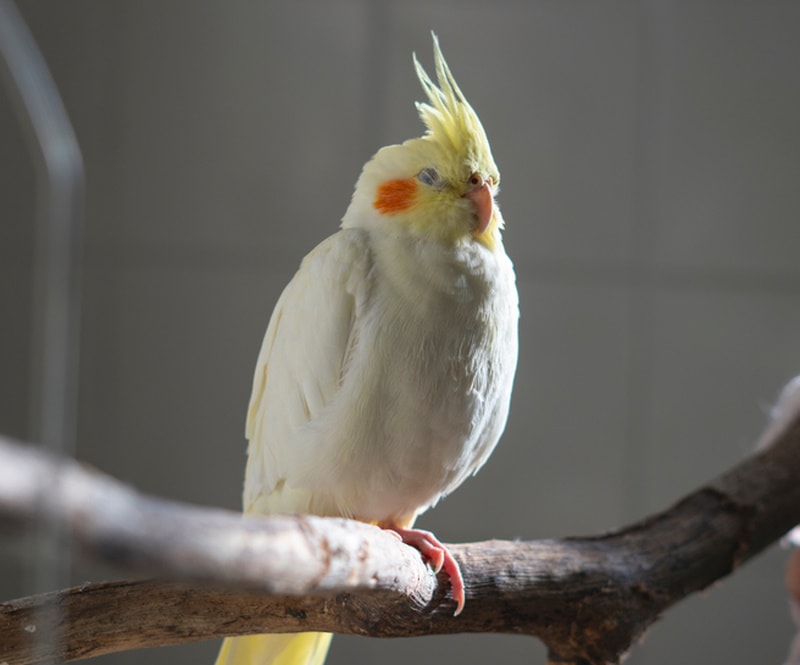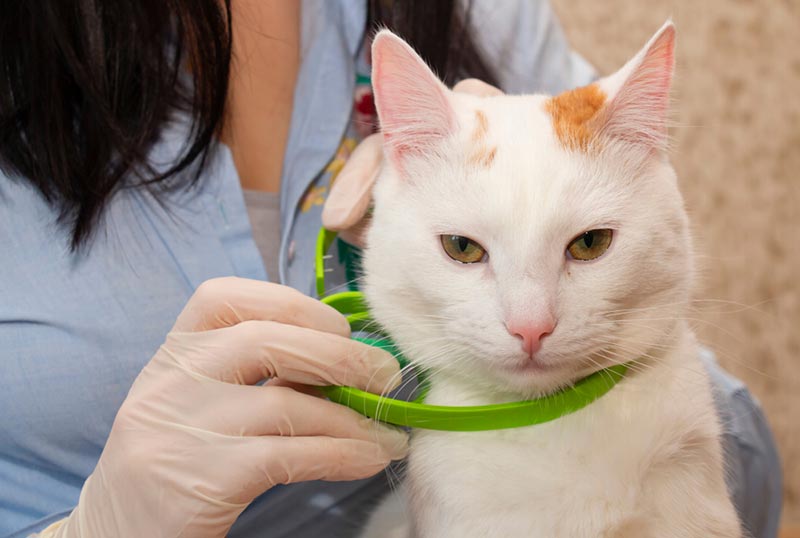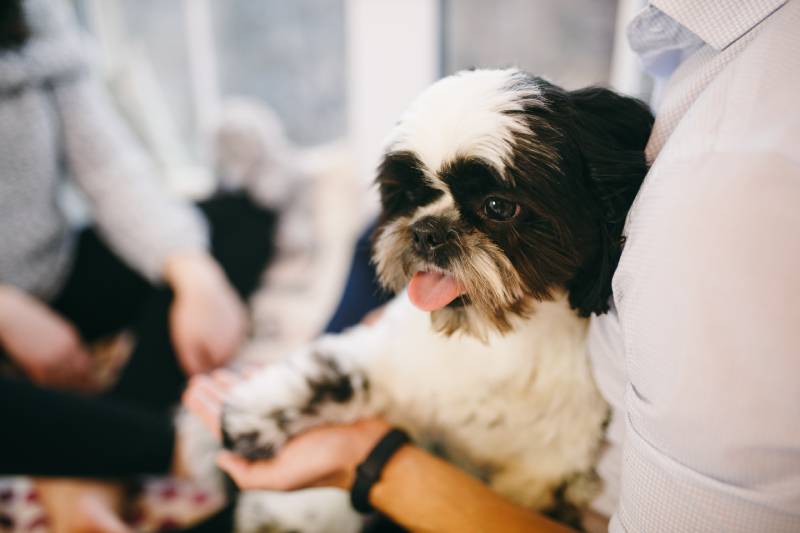How Do Cockatiels Sleep? Our Vet Answers & Explains Resting Positions
By Dr. Luqman Javed, DVM (Vet)
Updated on

Click to Skip Ahead
Cockatiels sleep to reap the benefits of rest, just like other birds do. Like many other parrots, wild cockatiels are diurnal; they spend their days awake and sunset seems to be an important trigger for them to wind down for the day. As pet owners, the charming sight of a pet asleep can be just as rewarding an experience as playtime with a cockatiel when they’re awake.
So, how exactly do cockatiels sleep? There happen to be a few ways for cockatiels to sleep safely and comfortably. We’ll discuss these reasons and much more right here.
The 5 Common Sleeping Positions of Cockatiels

Generally speaking, cockatiels have a few variations in their stance when they sleep, regardless of where they fall asleep. Though most parrots are habitual sleepers and prefer to rest in the same spot, a pet comfortable with your presence may even fall asleep on your shoulder. The most common sleeping positions of healthy adult cockatiels are the following:
1. Head Tucked Between Shoulders and on One Leg
This is by far the most common position parrots assume when they go into deep sleep (also known as REM, which stands for rapid eye movement sleep). In this position, a cockatiel will turn their head over either shoulder and tuck it in between their wings, at around the point of their shoulders. In addition, they will lift either leg off from their perch and doze off. The lifted leg is held very close to their body, with its toes all “clenched.” It’s very common to not see the lifted leg at all, as it disappears into their feathers.
While sleeping this way, cockatiels (like other parrots), are able to switch their “resting” leg with their “perching” leg. This doesn’t involve waking up and is somewhat similar to how we may turn in our sleep without waking up.

2. Head Tucked Between Shoulders and on Both Legs
This is a slightly modified version of the position described above. The only difference is that, in this instance, both of a cockatiel’s feet remain on their perch. The reason why cockatiels (like other parrots) at times choose to sleep like this isn’t properly understood. At times, an injured parrot might not feel steady on one leg, and therefore, might resort to using both feet to grip a perch while asleep. However, even apparently healthy cockatiels may sleep this way. Generally sleeping, this isn’t a cause for concern.
3. Head Facing Forward and on One Leg
Another position cockatiels might assume when sleeping is having their head facing forward, held very upright and close to their body. Their head almost appears to be “tucked” close to their body when they sleep in this position. Once again, they may sometimes sleep in this way with one leg held up close to their body, while the other leg grips a perch.

4. Head Facing Forward and on Both Legs
Like with their head facing backwards, a cockatiel may sleep with their head facing forward while having both their feet grasp onto their perch.
5. Breeding Season – Sitting & Sleeping
A fifth possible position is unique to the breeding season. When cockatiels incubate their eggs, they sit on them. The pair takes turns incubating their eggs. Males incubate the clutch from morning till about afternoon. The female then takes over and incubates the eggs for the rest of the day and through the night. At night, she will sleep while sitting on the eggs, with her feathers slightly raised and her clutch underneath her breast.
A breeding pair of cockatiels often only sleep “lightly” so that they may quickly respond to any intruder who comes near their clutch. It is, therefore, important to not pester your breeding pair (unless absolutely necessary), as they will quickly wake up if you approach their nest.

Head Turns While Asleep
At times, cockatiels may slightly shift their head (to the left or right) while asleep. This usually happens subconsciously, if they can pick up sounds from the side of their head, and usually only happens in non-REM sleep, also known as a “light” sleep. Interestingly, the sleeping physiology of birds is fascinating, and half their brain may be active while your pet apparently appears to be asleep, allowing them to turn their head to a stimulus. This is why, at times, a cockatiel may open just one eye while asleep to quickly scan their surroundings for safety.
How Do Baby Cockatiels Sleep?
Baby cockatiels, also known as hatchlings, sleep by simply sitting on their nest. They often huddle together to keep each other warm. They may continue to sleep in this way as fledglings (fresh out of the nest) and only transition to an adult sleeping pattern after they undergo their first molt (at around 3-4 months, on average).

What Sleeping Positions Are Signs of a Problem in Cockatiels?
Generally speaking, cockatiels that are ill may have altered sleeping patterns or positions; however, not all illnesses and diseases cause a change in sleeping positions. Nonetheless, it is important to keep an eye out for these signs:
- Sleeping with their head falling forward and their feathers ruffled
- Falling off their perch while sleeping
- Sleeping in a nest box outside of their breeding season
- Breathing very heavily while sleeping
- Tail bobbing while asleep
- Upper eyelid drooping
- Sleeping excessively (even outside their usual routine)
- Sleeping with their beak open (breathing from their mouth while asleep)
Please note that the list above isn’t exhaustive. It is important to work with a qualified veterinarian who can help sort the problems out and get your bird they require.
Conclusion
Cockatiels are fascinating birds and are known for their many quirks and antics. When they’re not busy whistling, dancing, and playing, they seem to amuse their owners by sleeping in various positions while looking adorable doing so. In this article, we’ve covered the common positions a cockatiel would sleep in and signs that would indicate that something might be wrong with your bird.
Featured Image Credit: Andredanz, Shutterstock














